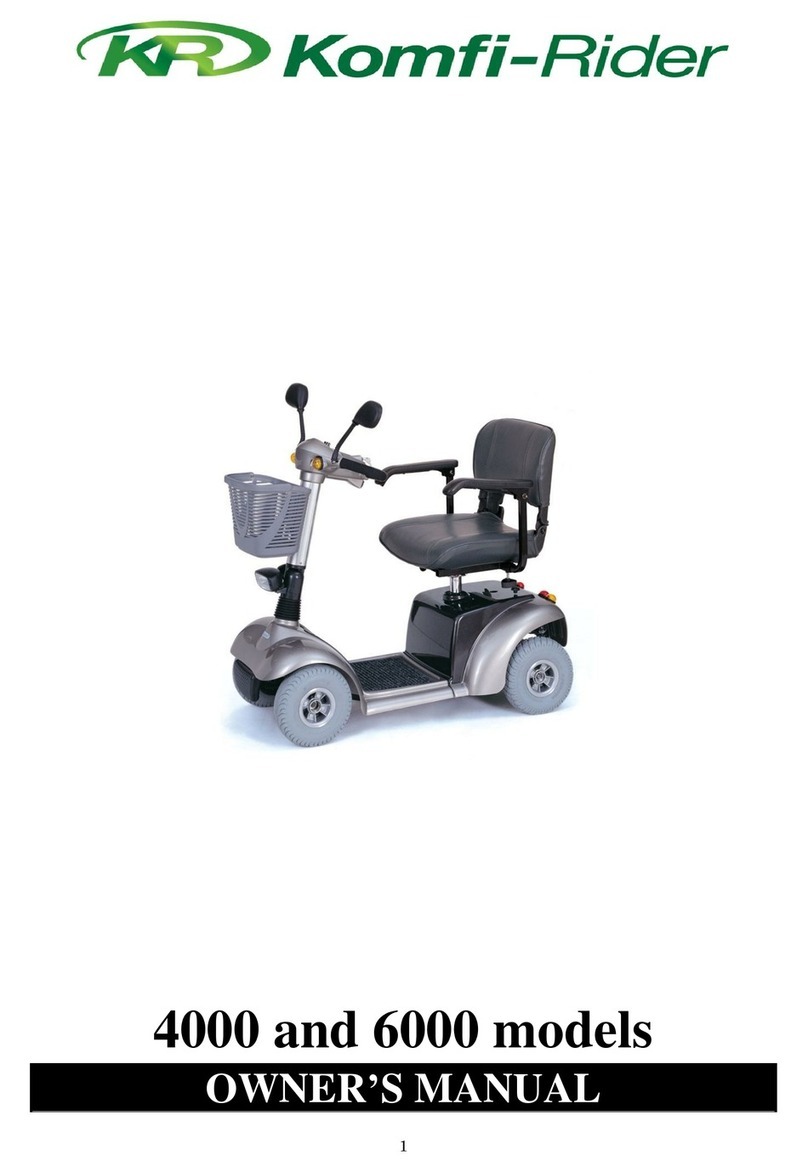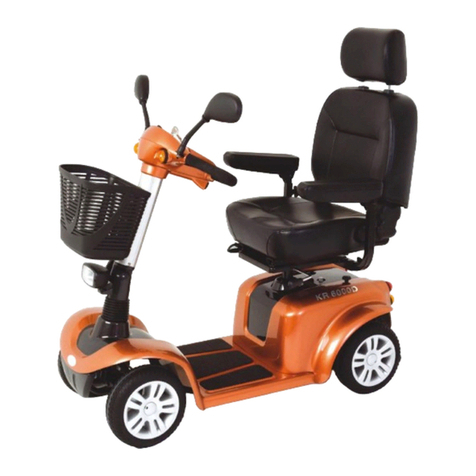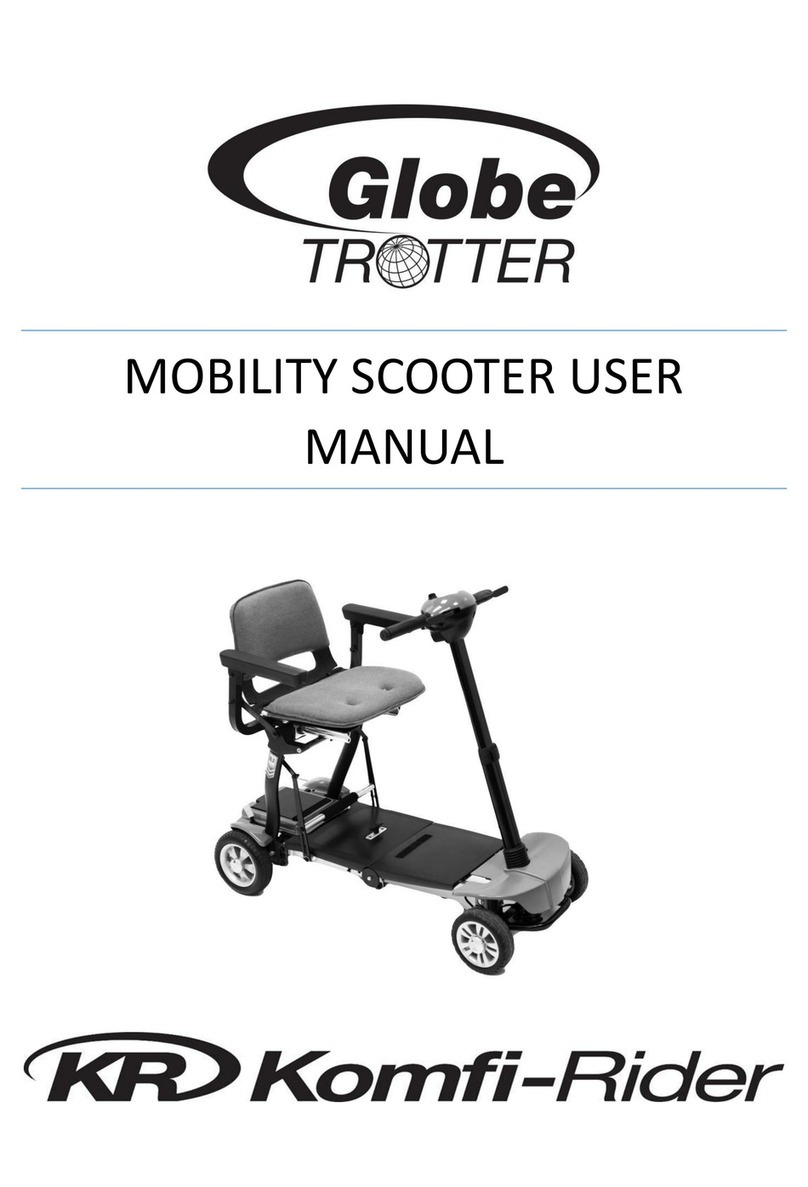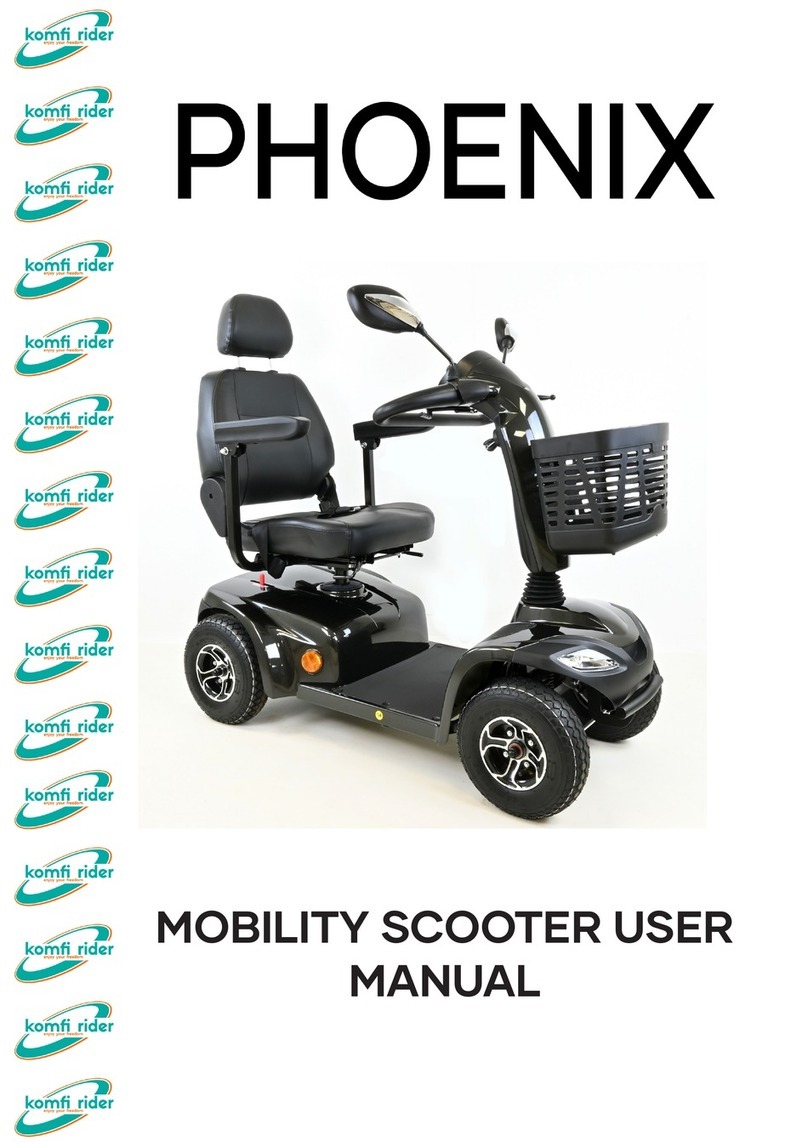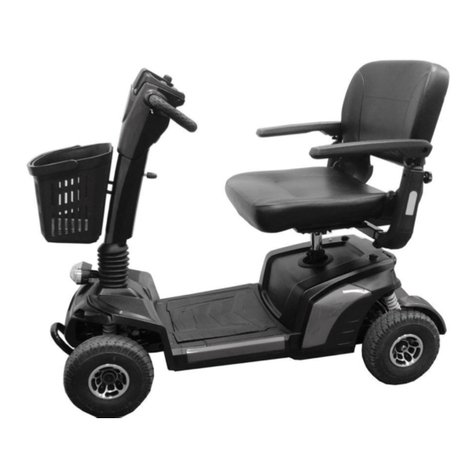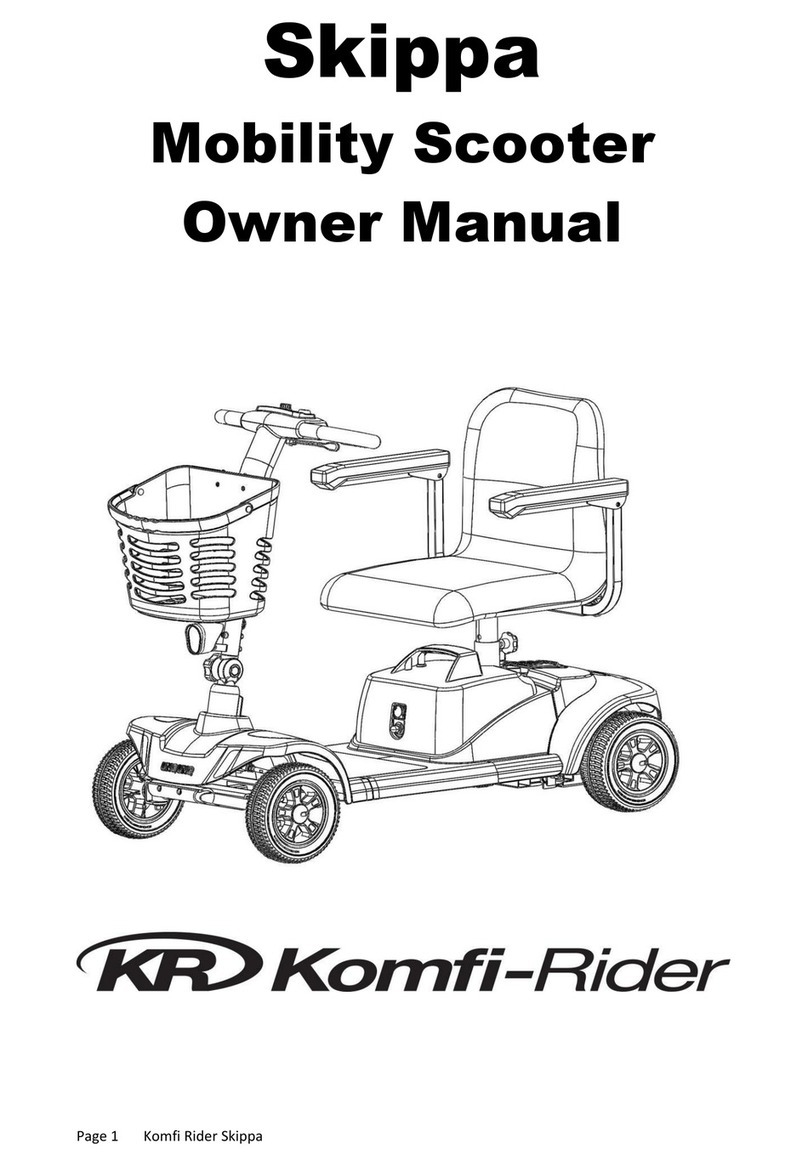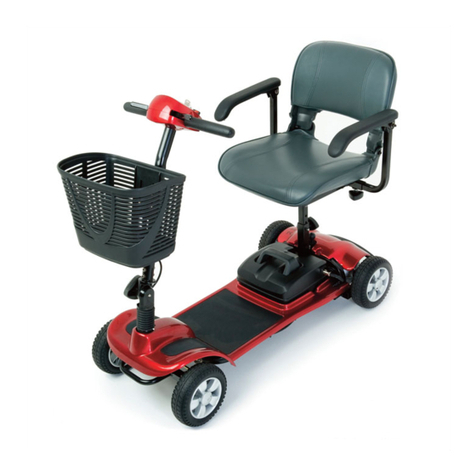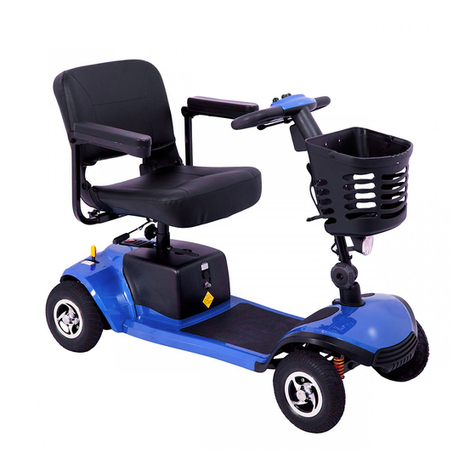
KR8000 Mobility Scooters Owner’s Manual
2 | P a g e
TABLE OF CONTENT
2. Safety Notices...................................................................................................................3
3. Electromagnetic Interference (EMI).................................................................................5
Electromagnetic Interference (EMI) From Radio Wave Sources........................................5
Powered Scooter Electromagnetic Interference (EMI) .......................................................6
4. Parts...................................................................................................................................7
5. Operation...........................................................................................................................8
Control Panel .....................................................................................................................8
Power Switch .....................................................................................................................8
High/Low Speed Switch on Power Switch……………………………………………………..8
Forward & Reverse ............................................................................................................8
Driving Speed.....................................................................................................................8
Braking & Stopping.............................................................................................................8
Headlight/Taillight Button....................................................................................................8
Turn Signal Buttons............................................................................................................9
Horn Button........................................................................................................................9
Battery gauge.....................................................................................................................9
Sleep Mode......................................................................................................................10
Clock...............................................................................................................................10
Seat..................................................................................................................................10
Tiller Adjustment...............................................................................................................11
Drive Mode.......................................................................................................................11
Freewheel Mode...............................................................................................................11
Driving Your Scooter.........................................................................................................11
6. Batteries & Charger........................................................................................................12
Charging the Batteries.....................................................................................................12
Cleaning the Batteries.....................................................................................................13
7. Inspection & Maintenance.............................................................................................14
Daily Checking .................................................................................................................14
Regular Maintenance Record...........................................................................................14
Fuses, Circuit Breaker and Tires.........................................................................16
Maintenance.....................................................................................................................16
8. Troubleshooting..............................................................................................................18
9. Specifications .................................................................................................................20
10. Limited Warranty ............................................................................................................21
11. Product Registration......................................................................................................22
